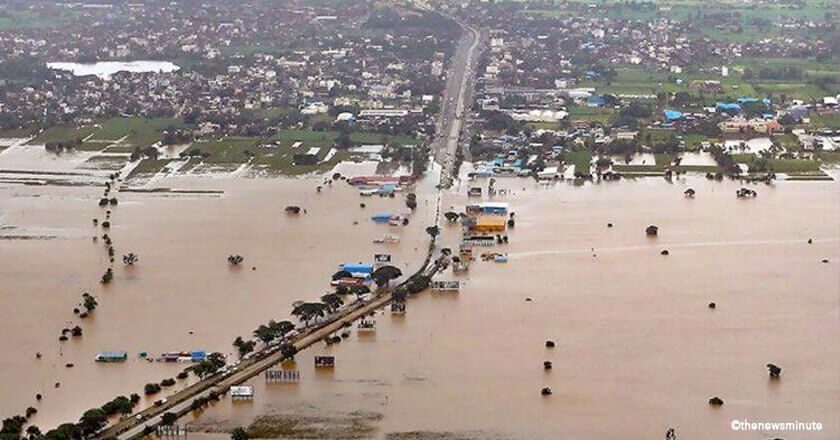THE “RAINFULL” PARTS OF THE WORLD (Average Annual Rainfall)
December 17, 2020 | Created by: Andreas Klippe | Comments

Year after year in the Philippines, from June to the early part of December, people get ready for the “rainfull season” (a season full of rain)! Children play in the mud, singles read books in coffee shops, mothers buy raincoats for their children and fathers hum the tune of “raindrops keep falling on my head” en route to work in this time of the year. It’s the time of the year!
But probably not the most wonderful time for most people.
Of course, it would not be that wonderful when ten typhoons are most likely to enter the Philippines in this part of the year. Actually, in 2020, rainfall has been quite heavy that it submerged many areas in the country.
Now, do you wonder if heavy rain is also experienced in other parts of the world?
Well, certainly yes. Many countries in the world experience the same amount of rainfall like the Philippines. Some experience even worse, to tell you the truth.
THE RAIN THAT IS NOT IN SPAIN
In the 2014 data statistics of the Food and Agriculture Organization, the Philippines is ranked 17th in the list of 177 countries that were studied to measure the Average Precipitation in Depth Per Year. The data showed that four (4) countries exceeded 3,000 mm of rainfall per year: 1. Colombia–3,240 mm; 2. S.T. & Principe- 3,200 mm; 3. Papua New Guinea- 3,142 mm; and 4. Solomon Islands- 3028 mm.

Meanwhile, six (6) countries in Asia are included in the Top 20 with the highest amount of precipitation in the year 2014. Malaysia ranked 7th with 2,875 mm; Brunei is 8th with 2,722 mm; Indonesia is 9th with 2,702 mm; Bangladesh is 10th with 2,666 mm; Singapore is 13th with 2,497 mm; and the Philippines is 17th with 2,348 mm.
Take note that the higher the numbers are indicated on the table, the more intense the rainfall in the country is.

AVERAGE PRECIPITATION IN DEPTH
So just what is Average Precipitation and what does it suggest? The Average Precipitation in Depth per year is defined by the Food and Agriculture Organization as the “long-term average in depth (over space and time) of annual precipitation in the country.” Precipitation, on the other hand, is “any kind of water that falls from clouds as a liquid or solid”. Simply put, this Average Precipitation in Depth is the volume of rain, snow, sleet, or hail that pour in the country at a certain time. In tropical countries like the Philippines, Malaysia, Brunei, Indonesia, and Singapore, precipitation only accounts for rain.
CALCULATING RAIN
Now, to measure rainfall, experts would usually use rain gauges. They employ rain gauges to accurately measure the depth of rain that falls in an area. The experts may find it difficult to measure the water that falls onto the ground because some go down the slope or some are absorbed by the soil. In this situation, weather experts use an instrument that could provide an estimation of the volume of rainfall. We should remember, however, that the data from the rain gauge may not represent the entire area. For example, when the news says, “During Tropical Storm Ondoy (int’l name Ketsana), the PAGASA Science Garden [in Diliman, Quezon City, Philippines] measured 341 mm of rain in a span of 6 hours” it means that only the rain in the Science Garden was measured. It may or may not be similar to the measurement of the downpour outside the Science Garden.
It should be noted that the higher the water goes up to the gauge, the more intense rainfall there is in the area.

REASONS FOR HIGH PRECIPITATION
The average precipitation per year is associated with the weather condition that a certain country is experiencing. The countries that have the highest recorded average precipitation usually experience heavy downpours or tropical storms.
The location and the climate can be the reasons why some countries experience heavier downpours than the others. Many of the countries mentioned above belong to the category of “Tropical Countries”. Many of them are also located along bodies of water. Tropical countries or the “Tropics” are most likely to experience much rain than elsewhere in the world.
Active rain is more frequent there than in temperate countries. Also, when a country is near a body of water, it experiences more frequent and intense tropical storms especially that we are experiencing climate change. As I mentioned in the article, How German Technology can Contain PH Flood Disasters, climate change is one of the major contributors to the increased frequency and intensity of tropical storms. In another article, I also said that warm air can hold seven percent more water for every one degree Celsius increase in temperature. When there is an increased temperature, more moisture will be in the air; thus, leading to more downpours.

RAINFALL: A PRECURSOR TO FLOODING
High precipitation is an indication that a country often experiences heavy downpours, typhoons, tropical storms or cyclones. Typhoons and heavy downpours bring with them flooding, among others. Flooding is one of the major causes of casualties, fatalities and loss of properties. Actually, in recent months, some regions in the Philippines (Metro Manila and some parts of Northeastern Luzon) experienced terrible flooding conditions. This is after a series of typhoons hit the country. The roof-level floods inundated several properties and drowned some people and animals.
COUNTRIES WITH LOW VOLUME OF RAINFALL
Some countries though, have little volume of rainfall. Some examples are: The Netherlands with 778mm (104th), Germany with 700 mm (109th), China with 645 mm (117th), Sweden with 624 mm (123th) and Australia with only 534 mm (136th).
Consequently, there are countries that have even lower volume of rainfall; thus, are at the bottom of the list. The countries that are in the lowest ranks are Egypt with 51 mm (177th), Libya with 56 mm (176th), Saudi Arabia with 59 mm (175th), Qatar with 74 mm (174th) and the United Arab Emirates with 78 mm (173rd).

LOW PRECIPITATION COUNTRIES USE FLOOD BARRIERS
I wrote above that “high precipitation normally tends to have heavy downpours”. But does it necessarily mean that countries with low precipitation do not experience such problems?
Qatar is number 174th and has seen terrible flooding in October 2018. All these countries from the Middle East ranked in the 170s faced similar problems of flash floods. It is true that they do not get flooded more often as compared to other regions in Asia, but flooding became more frequent than before. Flash floods there suddenly became extremely brutal.

Germany too, is ranking low, on the 109th, but experiences annual terrible floods all around the country. Flooding also becomes more and more unpredictable in time and location. China ranked 117th and has low average in annual rainfall; however, it did avoid heavy flash-floods and terrible flooding since June in 2020.
Some of these countries with low precipitation have done their homeworks and are still doing it. Qatar Foundation installed RS Flood Barriers to 12 huge buildings in Doha Education Center in 2019. In Germany, more and more companies, the government, and private house owners are protecting their buildings against the danger of floods. Other countries like China have realized that immediate flood protection is a must to survive.
The level of precipitation is therefore not an appropriate indicator for you to base your decision on whether you should protect your properties or the country’s infrastructures. Climate change is threatening everybody everywhere.
Everybody. Everywhere.
WEATHERING THE STORM
Many countries, whether of low or high precipitation, are vulnerable to rain and typhoons; thus flooding. That is something you cannot change unless you can push your country to another location.
What we can do, however, is to secure our places against possible flooding situations that come with rain. One way of securing our properties is through investing in flood barriers. Flood barriers provide protection for residentials, businesses, industrial areas, barangay offices, city halls, municipal halls, and other governmental offices.

These barriers for doors are modern technology that is able to stop floods from getting into your property. They can be demountable flood barriers, mobile flood barriers, flood doors and gates, sliding, self-closing, automatic flood barriers. These solutions are made of marine-grade aluminum, stainless or hot-dipped galvanized steel, lightweight, non-rusting. Their service life can be up to 50 years and longer. They are not like sandbags that require enormous efforts to install – and still do not work! Worst, these sandbags are difficult to deploy and dispose of. These barriers are also not like dikes that require a huge amount of money for construction and annual maintenance. That does not even mention the great effort that should be expended when maintaining these dikes. Everyone can deploy demountable flood barriers easily and can be removed when no longer needed. Also, permanently installed flood barriers like doors or gates are easy to operate with a very, very low effort of maintenance.
GET THE SOLUTION NOW!
We are at a time where we cannot really escape the harm that floods can bring us. Sadly though, it is not as if we can change anything in an instant. We cannot change the volume of rainfall nor we can stop the rivers from overflowing. We also cannot immediately stop climate change. What we can do, however, is to invest in something that can protect our investments and more importantly, our lives.
The property owners need this. The government needs to consider this, too. It can be considered as certain that the average precipitation will increase even more in the coming years. We don’t know what the future holds but we should at least get hold of the solutions we can do to prevent worse case scenarios.
To learn more about the latest flood protection technology, subscribe now to our Flood Expert Tips (IF YOU HAVEN’T YET!).


